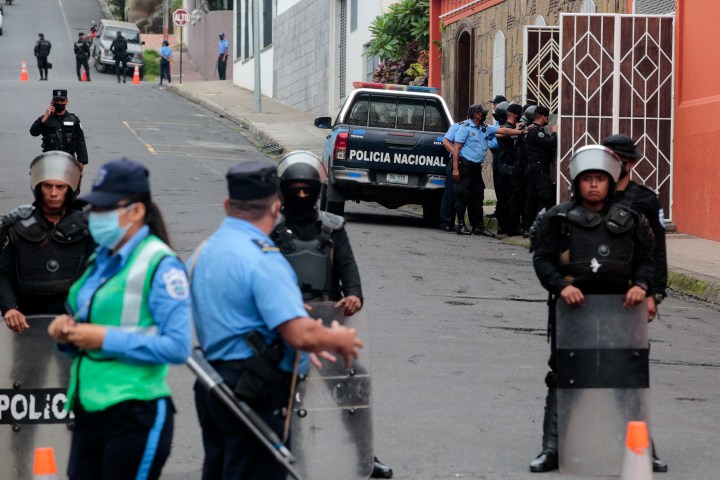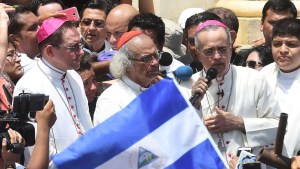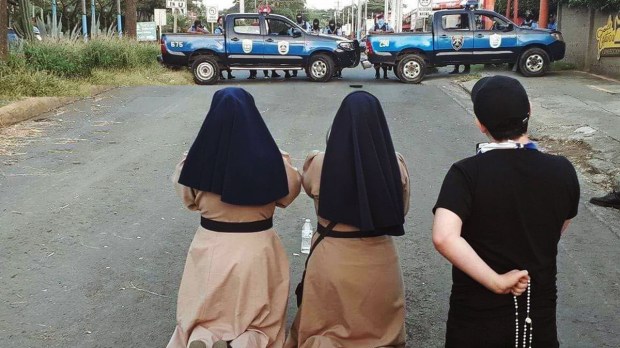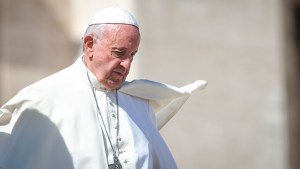The ongoing effort to silence dissenting voices in the country has directly targeted the Nicaraguan Catholic Church repeatedly. In less than four years, the Catholic Church in Nicaragua has gone through more than 190 attacks and desecrations, including a fire in the Managua Cathedral, the expulsion of the Missionaries of Charity, and the highly irregular house arrest of Bishop Rolando Álvarez, accused of “crimes against spirituality.”
A report elaborated by Martha Patricia Molina Montenegro, a member of the Observatorio Pro Transparencia y Anticorrupción, called Nicaragua: A Persecuted Church? (2018-2022), shows the Catholic Church has been systematically targeted by Ortega’s regime, which has unleashed an “indiscriminate persecution against bishops, priests, seminarians, religious, lay groups and everything and everyone who has a direct or indirect relationship with the Catholic Church.” Jaime Septién, from the Spanish Edition of Aleteia, gives the reader seven keys to understand how the situation got this far.
Sandinismo takes over
In 1979, after many years of struggle, the Sandinista National Liberation Front (FSLN), founded in 1961, succeeded in overthrowing the Somoza dictatorship which had ruled the country with an iron fist for several decades. The Sandinistas ruled from that year until 1990. Much of their rise to power was thanks to the mediating work of the Catholic Church, led at that time by the former Cardinal of Managua, Miguel Obando y Bravo. At the beginning, the Sandinistas—with Daniel Ortega at the head—were close to the Catholic Church, but soon the break came when various members of the Church (for example, Ernesto Cardenal) were integrated into the political organization as ministers and members of the government.
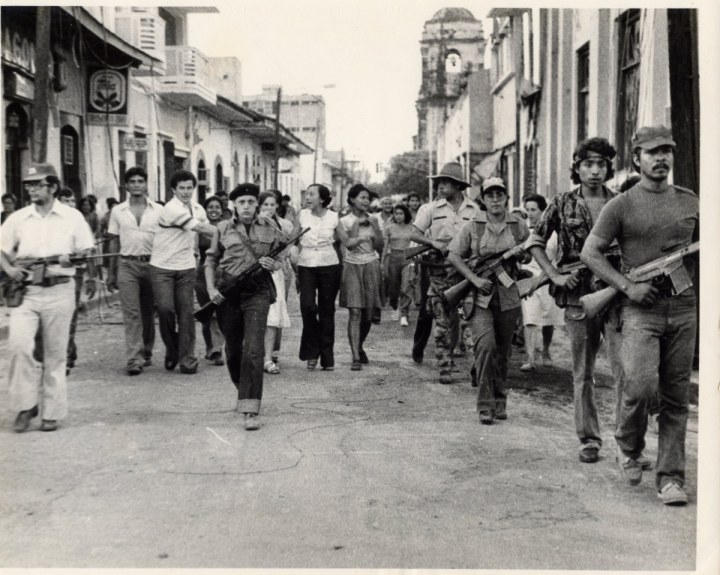
The public admonition of John Paul II
The priests who were in the Sandinista movement were suspended by the Vatican. When Pope John Paul II visited Nicaragua for the first time (March 4, 1983), two events further pushed the distancing of Sandinismo from the Catholic Church: Pope John Paul II’s public warning to Ernesto Cardenal to regularize his situation, and the shouts of those who participated in the multitudinous Mass with the entire Ortega cabinet. The people shouted slogans in favor of popular power and peace, interrupting the Mass. At one point, the pope responded by saying these prophetic words: “The Church is the first to want peace.” At that time there were expulsions of priests accused of “terrorism” and an atmosphere of undeclared hostility against the Church. St. John Paul II would remember that trip as a “great dark night”.
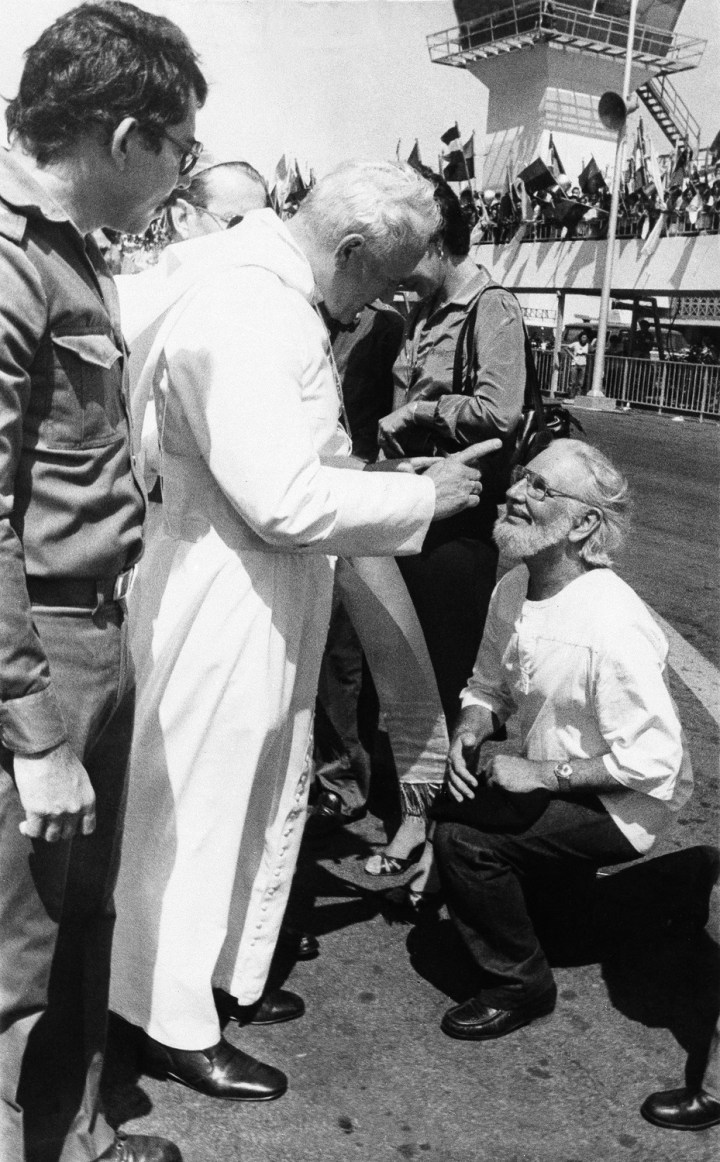
The expulsion of Bishop Vega
Now in power, the Sandinistas wanted to take revenge for the positions of the Church and the rejection of liberation theologians during the papacy of John Paul II, considering this an act of opposition to the people’s revolution. The persecution and possible exile of Bishop Rolando Alvarez brings to mind the persecution and exile to which the regime subjected the bishop of Juigalpa, Pablo Vega, in 1986. By means of deceit, they invited Bishop Vega to a meeting. There they apprehended him, put him in a helicopter, and left him on the other side of the border with Honduras. The accusation, however, was similar to those of today: “treason.”
When Sandinismo was not in power
From 1990 (the first democratic elections after the Esquipulas II Treaties, in which the Catholic Church of Nicaragua played a major role) until 2006, Daniel Ortega and his party remained in the ranks of the opposition, with three failed attempts to return to power. During that time, aware of the prestige of the Catholic Church among the Nicaraguan population, Ortega tried to ingratiate himself with it. So much so that it was Cardinal Obando y Bravo himself who officiated at the 2005 Catholic wedding Mass of Ortega and Rosario Murillo, who had been together for 25 years. Ortega even asked for forgiveness for “errors and outrages against figures of the Church in the past.”
The Cardinal’s “Viborazo”
It was 1996 and Ortega was seeking to return to power when an event occurred that would mark the memory of Ortega and his wife. It was during a homily on the eve of the elections, known as “the parable of the viper” or el viborazo. Cardinal Obando y Bravo, who gave the homily, warned voters that they should not welcome a “dying viper” because, if it recovered, it would kill its savior. Analysts were unanimous in declaring that the snake was Daniel Ortega.
In the end, in those elections, the winner was Arnoldo Alemán, of the Constitutionalist Liberal Party. And it would not be until 10 years later, in 2006, that Ortega would return to power. Fidel Castro aside, Ortega is one of longest-serving non-royal rulers in the world and the longest serving non-royal leader in the Americas.
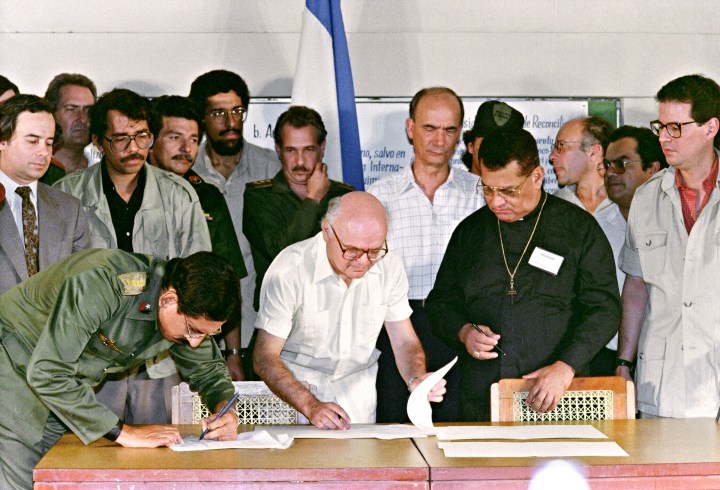
First warnings
The years from 2006 to 2018 were years of growing tensions between the Ortega-Murillo government and the Catholic Church. Another major critic, the auxiliary bishop of Managua, Silvio José Báez, who is now living in exile in Miami at the request of Pope Francis (he had received death threats), said in 2011 that Nicaragua was heading towards “visible or covert” totalitarianism.
Several bishops were harassed, among them the bishop of Matagalpa, who has always been characterized by his opposition to the Sandinista regime. In fact, in his youth, he refused to perform the “patriotic” military service to which he was “obliged” by the revolutionary government.
The debacle
The most serious tensions between Ortega-Murillo and the Catholic Church have occurred since April 2018. At that time, the Government attempted a reform of the social security laws, which unleashed protests throughout the country, with Managua and cities such as Matagalpa as the hot spots. The protests were violently repressed by the Sandinista government and its security forces, as well as by paramilitary groups. The Catholic Church was the first to protect those who were freely demonstrating and tried to mediate a national dialogue for peace, but failed. Ortega’s response was to call the bishops and priests terrorists and coup plotters, and Rosario Murillo’s response was to call them “devils in cassocks” (as Hugo Chávez famously called the Venezuelan bishop’s conference in 2000).
